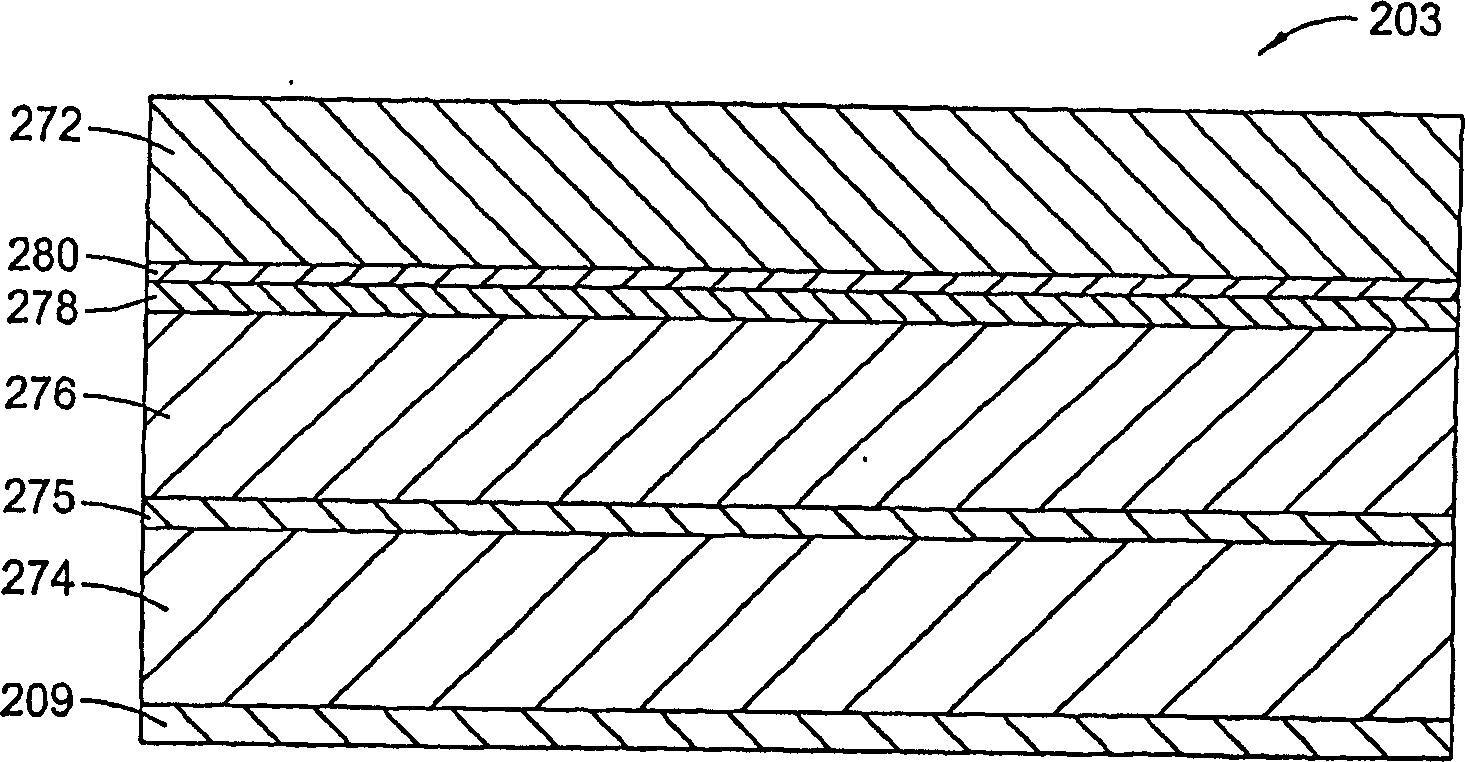Polishing composition and method for polishing a conductive material
A technique for polishing compositions and conductive material layers, applied in polishing compositions containing abrasives, chemical instruments and methods, circuits, etc., capable of solving problems such as yield loss and time increase
- Summary
- Abstract
- Description
- Claims
- Application Information
AI Technical Summary
Problems solved by technology
Method used
Image
Examples
Embodiment
[0173] To further describe the embodiments of the present invention, the following non-limiting examples are provided. However, these examples are not complete and are not intended to limit the scope of the present invention.
[0174] Polishing composition example / baseline
[0175] Baseline Example
[0176] In one embodiment of the present invention, the substrate 208 is placed in a polishing composition that includes an acid-based electrolyte system, one or more chelating agents, one or more corrosion inhibitors, a One or more pH adjusters, one or more additives, solvents or a combination thereof. An anode bias voltage of about 2.9 volts with respect to the electrode 209 is applied to the surface of the substrate by using the power supply 200. A pressure of 0.2 psi is applied to the substrate through the polishing head 202 to push it toward the conductive pad 203. The substrate 208 and the conductive pad 203 move relative to each other. The combination of the above elements of th...
example 1
[0187] In Reflection purchased from Applied Materials, Inc. of Santa Clara, California In the improved unit on the system, the following polishing composition is used to polish and planarize the copper-clad substrate.
[0188] About 6% phosphoric acid by volume;
[0189] About 2% by volume of ethylenediamine;
[0190] About 2% by weight of ammonium citrate;
[0191] About 0.3% by weight of benzotriazole;
[0192] Between about 2% and about 6% by volume of potassium hydroxide to provide a pH of about 5; and
[0193] Deionized water.
example 2
[0195] In Reflection purchased from Applied Materials, Inc. of Santa Clara, California In the improved unit on the system, the following polishing composition is used to polish and planarize the copper-clad substrate.
[0196] About 6% phosphoric acid by volume;
[0197] About 2% by volume of ethylenediamine;
[0198] About 2% by weight of ammonium citrate;
[0199] About 0.3% by weight of benzotriazole;
[0200] Potassium hydroxide between about 2% and about 6% by volume to provide a pH of about 5;
[0201] About 0.45% hydrogen peroxide by volume; and
[0202] Deionized water.
PUM
| Property | Measurement | Unit |
|---|---|---|
| size | aaaaa | aaaaa |
| size | aaaaa | aaaaa |
| diameter | aaaaa | aaaaa |
Abstract
Description
Claims
Application Information
 Login to View More
Login to View More - R&D
- Intellectual Property
- Life Sciences
- Materials
- Tech Scout
- Unparalleled Data Quality
- Higher Quality Content
- 60% Fewer Hallucinations
Browse by: Latest US Patents, China's latest patents, Technical Efficacy Thesaurus, Application Domain, Technology Topic, Popular Technical Reports.
© 2025 PatSnap. All rights reserved.Legal|Privacy policy|Modern Slavery Act Transparency Statement|Sitemap|About US| Contact US: help@patsnap.com



